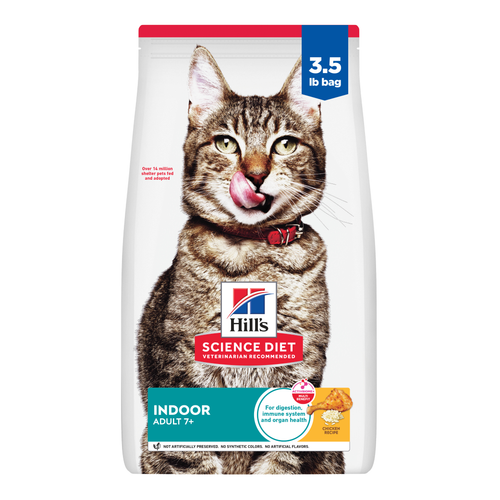

As a cat parent, you've probably witnessed your cat striking all kinds of poses. Maybe sometimes you catch your fluffy Maine Coon asleep on their back. Or, perhaps your Siamese likes to lounge with their legs gracefully outstretched. But spend enough time together, and you're sure to spot the widely beloved "cat loaf." And if you've ever noticed your cat sitting with their paws and tail all tucked beneath them (forming a bread-loaf-like shape), you may have wondered why.
Why do cats loaf? Can we learn anything from our cat loaves, or do we simply chalk this behavior up to one of the many cute, quirky things our cats do? Let's discuss everything cat parents should know when they come upon a kitty loaf in their homes.
What Is a Cat Loaf?
If you've ever looked at a typical loaf of sliced sandwich bread, you could probably describe its shape from memory: compact and rectangular but with rounded edges.
Looking at a cat loaf, it's easy to see the resemblance. With their paws and tail tucked beneath them, your cat has taken a compact and rectangular form but with rounded edges. Thus, the term "cat loaf" was born.
Using your imagination, you could, as many do, identify several types of cat loaves. The traditional, most "loaf-like" pose is the one described above, where your cat's paws and tail can't be seen. But you might discover your cat takes other somewhat compact poses that fall under the bread loaf umbrella. Sometimes, cats will lower themselves with their tails wrapped around them and their paws flat on the ground. You might also find a cat with one paw fully tucked and another half-tucked in front of them. Still, other cats will tuck themselves into compact spaces, such as boxes or sinks, with their appendages tucked beneath them, almost like a loaf that hasn't yet been removed from its baking pan.
Although most commonly recognized as cat loaves, some other terms for this tucked-in shape may include tugboat, potato cat, hovercat and turkey cat.

A great looking coat attracts more petting
Pets benefit from looking good, too. Make sure your cat's fur is at its finest with our science-led Sensitive Stomach & Skin Chicken & Beef Dinner cat food. It supports digestive health, nourishes skin and promotes a lustrous fur.
A great looking coat attracts more petting
Pets benefit from looking good, too. Make sure your cat's fur is at its finest with our science-led Sensitive Stomach & Skin Chicken & Beef Dinner cat food. It supports digestive health, nourishes skin and promotes a lustrous fur.
Why Do Cats Loaf?
According to Inverse, "You're most likely to spot a cat loaf in his or her favorite spot, be it on your lap, clothes, furniture, or any … area in your house that your cat has decided to conquer." According to experts, there's a reason for this.
The cat loaf pose typically indicates relaxation. Quoted in Inverse, Mikel Delgado, a cat researcher and postdoctoral fellow at the School of Veterinary Medicine at UC Davis, explains that, tucked as they are, cat loaves are clearly not in a defensive position from which they could spring into an attack. "They aren't preparing to defend themselves or run away," says Delgado.
Another potential reason for kitty loafing may be more efficient heat retention. By tucking themselves into a neat little loaf, cats may be better able to maintain a comfortable body temperature without moving.
According to Delgado, it's also possible your cat may be trying to indicate discomfort if they're loafing. "A cat who is still perched on their paws may be in pain," Delgado says. "So it's good to know if the paws are totally tucked." If you suspect your cat may be in pain, take time to inspect their paws, or speak to a trusted veterinarian about the situation. Cats are notoriously skilled at hiding pain, so it's important to keep an eye out just in case.
Although cat loafing may just appear to be one of the many weird things cats do (and that we adore), it's clear that this pose can be as informative as it is adorable. And if you often find your kitty loaf in warm beloved places like your bed or your fresh laundry, take it as a compliment! It's highly likely they're showing their trust.




















